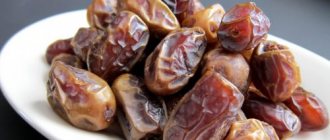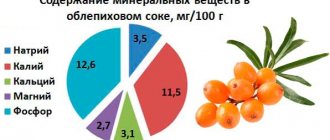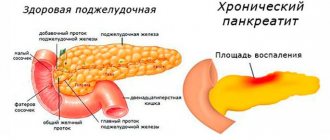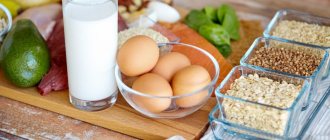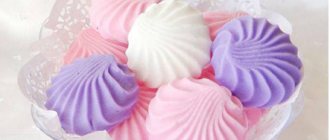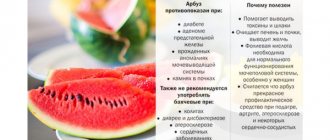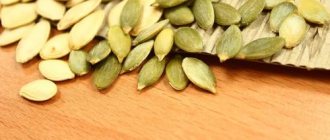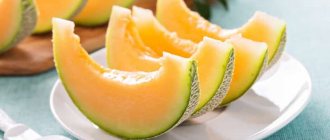When winter time comes, almost every person goes to the garage or basement for canned vegetables and fruits, and someone just wants sweets for tea and opens jam. Thanks to the variety of flavors and ingredients, homemade jam has become not only a preparation, but also a delicious dessert.
It's no secret that homemade jam is a natural product made from fruits or berries boiled with sugar or honey. There are often cases when they resort to using exotic ingredients to make jam: pine cones, flower buds, nuts and even vegetables. By the way, cone jam is incredibly useful for sore throats, but no one reveals the secret of its preparation.
What is pancreatitis?
Inflammation of the pancreas is called pancreatitis, which is a complex pathology, the treatment of which is quite long. Any stage of the development of the disease is accompanied by moderate nutrition, that is, adherence to a diet and daily routine. Food products included in the diet should have a moderate effect on the pancreas and not overload it. The course of inflammation of the pancreas is not too painful, but it is unlikely that anyone would want to go to the hospital or suffer every day in the toilet for several hours after each meal.
Rules and regulations for using jam when sick
To speed up recovery from pancreatitis, prevent the development of exacerbation of diseases and dangerous complications, experts (gastroenterologists, nutritionists, therapists, endocrinologists) advise adhering to a number of simple rules:
- Jams can be introduced into the diet only with long-term stable remission of pancreatitis.
- You are allowed to eat this product little by little: no more than 1–3 teaspoons per day.
- At first, only syrup from jam or confiture from ingredients crushed in a blender are used for food.
- Jam for a patient diagnosed with pancreatitis must be of high quality, properly stored in a cool, dark place. A quality product does not have mold, its structure is transparent, and there are no signs of fermentation in taste or smell.
Is it possible to use jam during pancreatitis?
Of course, with pancreatitis, it is recommended to completely exclude sweets from the diet, but the form of development of the disease should be taken into account.
Acute form of pancreatitis
In the acute form of the disease, the consumption of jam and drinks that contain it (tea with jam, fruit juice, compote) is strictly prohibited. The reason for this ban is explained by the high content of glucose in the sweet product, the breakdown of which requires insulin. In turn, insulin in pancreatitis is either not produced or is produced very poorly.
We also recommend viewing: Herring for pancreatitis: is sea fish good for inflammation of the pancreas?
Chronic form of pancreatitis
Remission of the disease becomes a much simpler period, since the patient’s diet is allowed to expand, but only if no signs of diabetes have appeared. In such cases, it is permissible to add jam to the diet, because it contains necessary vitamins and minerals that are useful for restoring the body.
Jam for acute pancreatitis and exacerbation of chronic
Jam in any form should be completely excluded from the diet of patients with acute forms of pancreatitis. Not only the jam itself is not allowed, but also drinks prepared with its addition (teas, fruit drinks, compotes, etc.). This strict prohibition is due to the presence of glucose in the jam, the absorption of which requires insulin. Insulin is produced by beta cells of the pancreas, and in the acute phases of the disease it is necessary to ensure maximum rest for the inflamed organ. Premature glucose loading can not only cause exacerbation of pancreatitis, but also subsequently lead to the formation of diabetes mellitus.
Rules for using jam for pancreatitis
- Jam for pancreatitis can be added to tea or boiled water, but only one teaspoon per day. If the patient’s health does not worsen the next day, the daily dose may be increased to two teaspoons.
- It is advisable to stick to syrup at first, and then switch to berries from jam after 2-3 days.
- It is not recommended to consume jam separately, that is, just eat one or two teaspoons. It is better to eat sweet preserves with a sandwich, pour it over cottage cheese or casserole.
- Homemade jam guarantees the absence of preservatives, flavors and chemical additives.
- Use a homogeneous formulation to ensure tolerance. It is better to remove all peels, seeds and seeds. It is beneficial to remove all of the above excesses for those who have stool disorders.
Jam for chronic disease and during remission of pancreatitis
When the painful symptoms of acute inflammation subside and the stage of remission of a chronic disease is reached, the diet expands gradually. Vegetables, fruits, lean meats, fish, dairy products, and even some sweets are added to the menu. Among sweet products, some types of preserves and jams are considered permitted.
To prevent the development of exacerbation of pancreatitis, you should first choose jam without whole berries or pieces of fruits and fruits. The homogeneous puree-like consistency of confiture or jam is more beneficial for the stomach, intestines and other digestive organs during a chronic inflammatory process. If such dishes are well tolerated, preparations from unchopped berries are gradually added to the menu.
When a stable long-term remission of the disease is achieved, doctors first recommend adding jam to tea when preparing jelly, compote, and fruit juice. Then it becomes possible to eat porridge, cottage cheese with jam, add it to casseroles, mousses. If eating such dishes does not worsen the patient’s well-being, the specialist allows the jam to be eaten in its pure form and used as a filling for savory baked goods, of course, following certain rules.
Which jam should I choose?
You can eat jam for pancreatitis, although in the same moderate quantity. But when it comes to choosing the flavor of jam, many people are already confused and even endanger their lives. First of all, if you want to taste jam, it is better to stick to safe options: blackcurrant, apple, apricot, peach, blueberry, cherry, sea buckthorn and cranberry.
Important. The above fruits should not be consumed fresh, since their acidity level is high, and when preparing jam it is significantly reduced.
The concept of “homemade jam” has been mentioned several times in the article and it is quite relevant due to the difference in the technology for preparing the homemade and industrial versions. Industrial jam produced by enterprises is, of course, tasty and its advertising contains the line: “Only natural and fresh ingredients! 100% original recipe." On the one hand, this statement is true, but hardly anyone asks the question of the amount of preservatives, stabilizers, dyes and flavors contained in this very jam.
Important. Each of the listed components is harmful to the pancreas; accordingly, consuming industrially produced jam will negatively affect the damaged organ. After this, you can forget about successful therapy.
What is the harm of jam for acute inflammation of the pancreas?
Acute pancreatitis is characterized by inflammation, swelling of the pancreas and its excretory ducts. As a result, the functions of the organ suffer: the production of digestive enzymes necessary for the breakdown of food in the small intestine is disrupted.
Plant fiber and acids, due to stimulation of the motor and secretory activity of the digestive organs, provoke increased pain (spasms in the abdomen develop), symptoms of dyspepsia: nausea, vomiting, flatulence, diarrhea.
The endocrine function of the gland also deteriorates. Due to a lack of insulin, it becomes difficult for the body to cope with an increased carbohydrate load, especially with diagnosed diabetes. A serious condition develops - hyperglycemia - accompanied by characteristic symptoms:
- weakness,
- headaches, dizziness,
- thirst,
- disturbance of consciousness, up to coma.
Thus, in case of acute illness, you should not eat all types of jams, preserves, along with other sweets.
Effective in any situation
The variety of sweet homemade berry dishes is quite large; in turn, our grandparents paid most attention to raspberry jam. The delicacy is useful for colds, sore throats and is essential for the prevention of various diseases. Having knowledge about these beneficial properties of raspberry jam, some patients with pancreatitis decide to test the theory in practice.
We also recommend viewing: Cinnamon for pancreatitis: benefits or harm for inflammation of the pancreas
In order not to worsen the patient’s condition in the acute form of the disease, raspberry jam should not be consumed, as well as any sweets. While during the transition to the chronic stage you can already afford a teaspoon of sweets.
The benefits and harms of jams for the human body
Jam or jam made from various healthy fruits and berries contains a large amount of vitamins, especially A, E, C, microelements (potassium, calcium, iron, phosphorus, magnesium and others), as well as plant fiber and fruit acids. Some varieties of this tasty product contain particularly large amounts of vitamins.
Jam or jam brings many benefits to the human body:
- The main beneficial property of sweets is considered to increase immunity. In winter, during the off-season, they become an excellent alternative to fresh fruits and berries. Raspberry jam is considered the most beneficial for the immune system.
- Vitamins and antioxidants help accelerate tissue regeneration and improve the condition of skin and hair.
- Antioxidant substances have a rejuvenating effect and prevent the development of malignant tumors of any location.
In addition to the beneficial effects, the sweet product can cause harm to the human body:
- There is a heavy load on the endocrine part of the pancreas, which is forced to synthesize increased amounts of the hormones insulin and glucagon. These hormones help reduce the concentration of blood sugar, which increases greatly after taking the product. Uncontrolled consumption of sweet foods increases the risk of developing diabetes.
- Acid-containing compounds in jams made from overly sour berries (currants, cranberries and others) irritate the mucous membranes of the gastrointestinal tract, causing an increase in the secretion of digestive juices. The production of pancreatic juice, which contains proteolytic enzymes that are dangerous to the tissue of the gland itself, also reflexively increases. A condition in which the pancreas is destroyed by its own enzymes is called pancreatic necrosis.
- If the product contains uncrushed fruits or whole berries, then such a product is dangerous for the body in case of various digestive disorders (pancreatitis, cholecystitis, gastritis, enteritis) also because there is plant fiber in the skin and pulp of fruits and berries. This substance increases peristalsis of the stomach, intestines, gall bladder, ducts that remove bile and pancreatic juice into the duodenum. This effect provokes a deterioration in the patient’s well-being and aggravation of the symptoms of diseases of the digestive tract.
What kind of jam is allowed to eat with pancreatitis?
After a diagnosis of pancreatitis (remission) is established, the patient is allowed to eat jam from non-acidic varieties of berries and fruits: raspberry, blueberry, strawberry, cherry, sea buckthorn, apple, peach, apricot, pear and others. Before using the product, you should consult your doctor.
Contraindications for consuming any jam are diabetes and obesity.
It is not recommended to eat industrially produced products, as they contain substances harmful to the pancreas (flavors, thickeners, flavor enhancers, preservatives).
The best option is to prepare your own dessert at home from berries or fruits grown in your own garden without the use of nitrates and other harmful fertilizers and pesticides. To avoid the development of hyperglycemia, nutritionists recommend using sweeteners or plant sweeteners, such as stevia, instead of sugar when cooking.


